Energy and Water Efficiency Metrics in Data Center Cooling
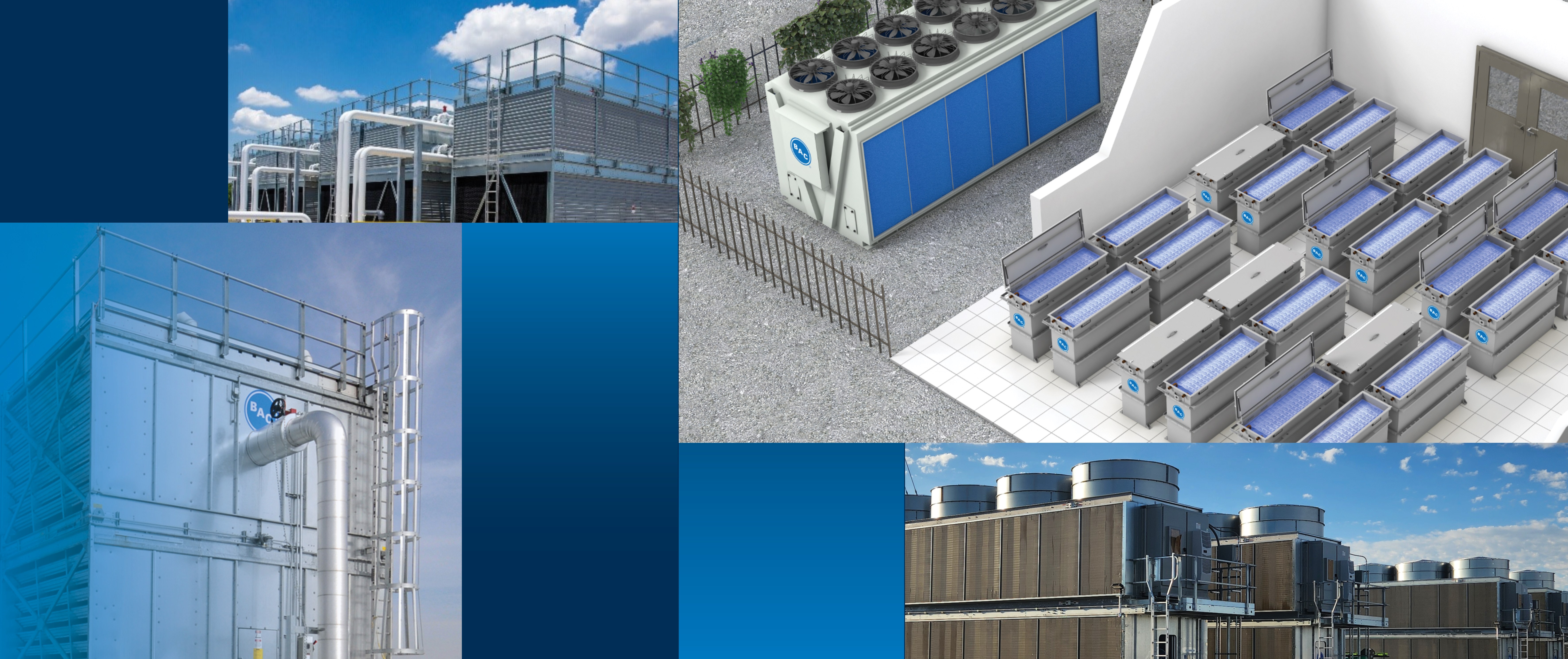
- Introduction
- Understanding Core Efficiency Metrics
- External Cooling Systems: Traditional Approaches
- Cooling Revolution for Inside Data Centers: Immersion Technologies
- Immersion Cooling Fundamentals
- Immersion Cooling Efficiency Metrics
- Integrating Immersion with Facility Scale Cooling
- Evaluating Internal Cooling Approaches: Immersion vs. Other In-Rack Technologies
- Cooling Performance in High-Density Environments
- System Efficiency and Lifecycle Costs
- Operational Flexibility and Redundancy
- Sustainability and ESG Impact
- BAC's Integrated Approach: Optimizing Total Facility Efficiency
- Implementation Considerations and Best Practices
- Future Outlook
For data center leaders, cooling strategy is no longer just about keeping servers online. It is about doing so with maximum efficiency and minimal environmental cost.
As energy prices rise and water scarcity intensifies, efficiency metrics have become essential tools for engineering and operational decisions.
As infrastructure evolves to include both external cooling towers and emerging immersion-based solutions, the lines between cooling strategy and sustainability planning continue to blur.
Energy use, water consumption, and long-term cost optimization must be evaluated holistically, not just per component, but across the entire facility ecosystem.
As a global leader in cooling system innovation, Baltimore Aircoil Company, Inc. (BAC) supports enterprise data centers with a full suite of efficiency-driven solutions, from advanced outdoor heat rejection solutions to immersion cooling.
Now, we will explore how to evaluate energy and water efficiency across different cooling approaches, highlight key performance metrics, and demonstrate how BAC’s integrated technologies help data centers stay ahead in an era of increasing operational scrutiny.
Understanding Core Efficiency Metrics
When evaluating heat rejection solutions for data centers, selecting the most efficient technology begins with a clear understanding of core performance metrics. These measurements are vital for comparing solutions, setting benchmarks, and aligning with regulatory and sustainability goals.

Power Usage Effectiveness (PUE)
PUE is the industry-standard metric for energy efficiency in data centers.
It’s calculated by dividing the total facility energy consumption by the energy used solely by IT equipment.
A lower PUE indicates greater overall efficiency, with modern facilities typically targeting a range of 1.2 to 1.5, with some solutions offering <1.05.
Cooling infrastructure has a major influence on PUE outcomes, often accounting for the largest share of non-IT power draw. Seasonal factors, such as ambient temperature, also affect cooling loads, making it important to evaluate PUE across multiple operating conditions, not just annual averages.
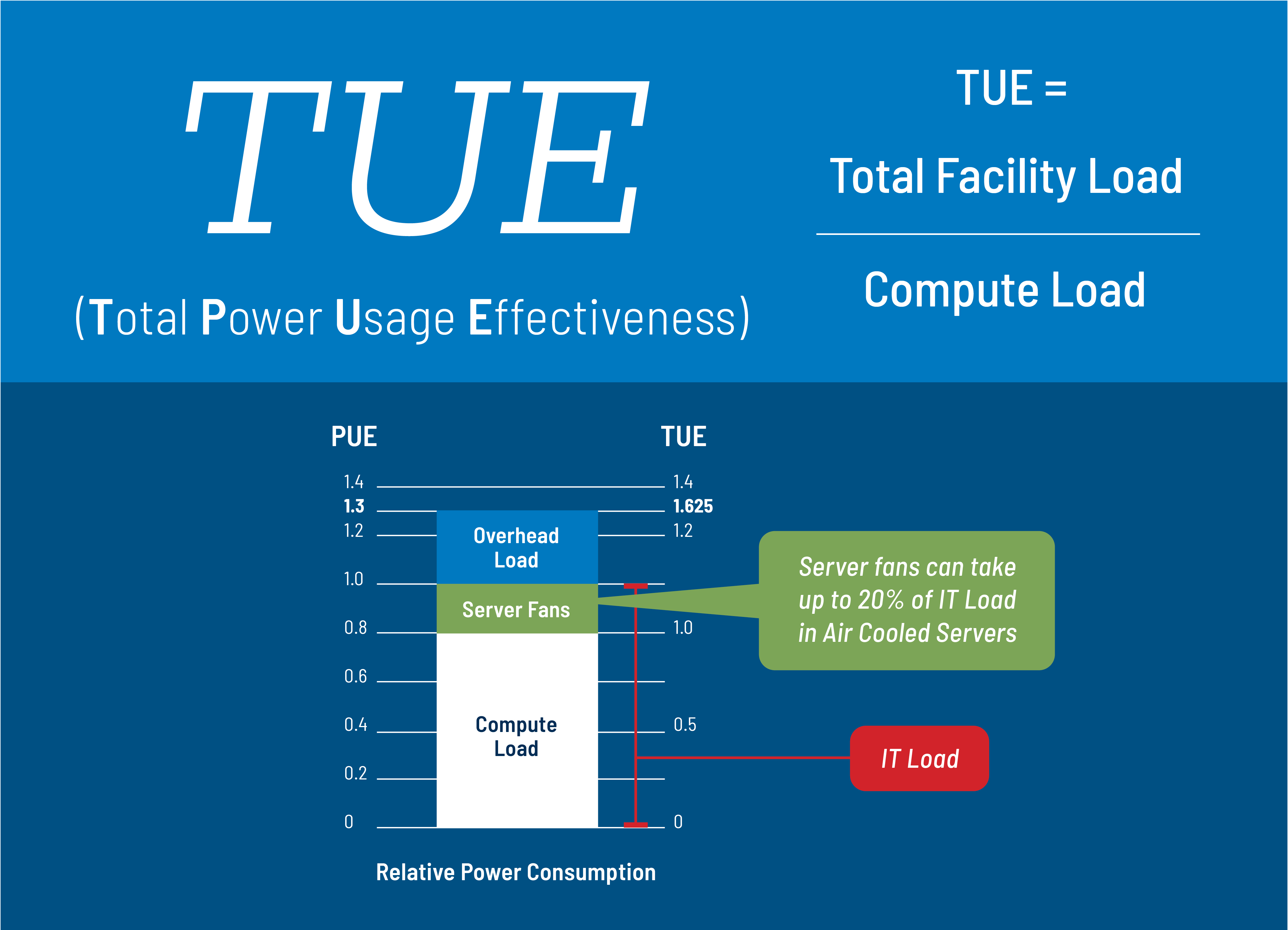
Total-Power Usage Effectiveness (TUE)
Building on PUE, another metric gaining popularity TUE. TUE expands the traditional PUE concept by including all power consumed inside IT equipment, such as server fans and internal power distribution losses, along with infrastructure overhead. This provides a more holistic view of energy efficiency across the entire data center ecosystem.
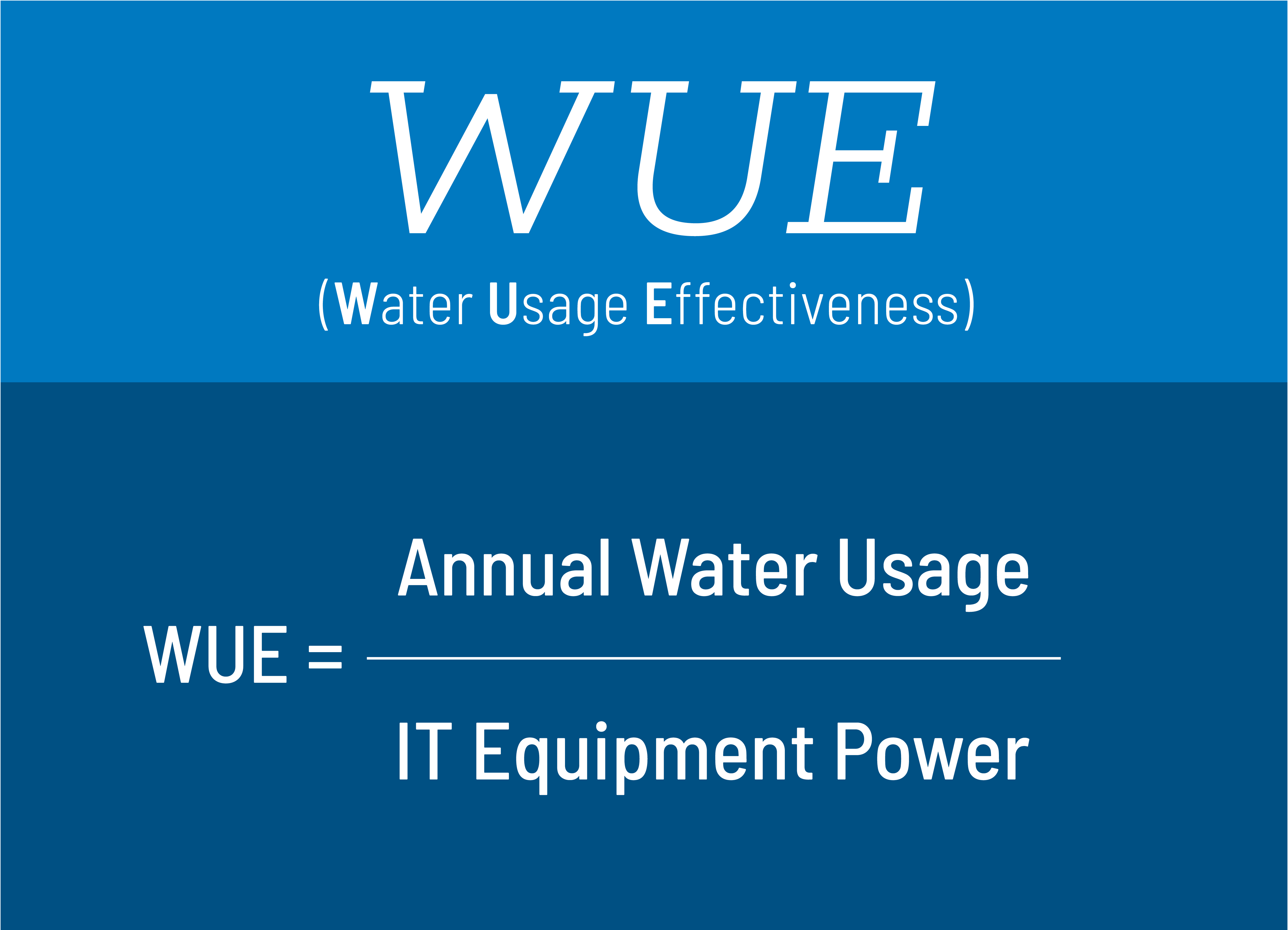
Water Usage Effectiveness (WUE)
WUE quantifies the amount of water used per kilowatt-hour of IT energy consumption. This metric is increasingly critical as sustainability targets and water scarcity issues rise.
Technologies like evaporative cooling towers may offer energy efficiency but use more water than dry or hybrid alternatives.
BAC’s product range includes solutions tailored for different WUE priorities, which balances water savings with thermal performance.
Future environmental regulations and ESG reporting pressures are expected to elevate WUE from a “nice to have” to a mandatory performance indicator.
Supporting Metrics
Beyond PUE, TUE, and WUE, several supporting metrics round out a complete efficiency profile:
- Cooling Efficiency Ratio (CER): Measures cooling output per unit of power consumed by the cooling system.
- Partial PUE (pPUE): Assesses efficiency of individual systems (like cooling) within the broader infrastructure.
- Carbon Usage Effectiveness (CUE): Connects data center operations to carbon emissions, offering a broader sustainability picture. Carbon usage is also factored into TUE.
- Total Cost of Ownership (TCO): Captures both CapEx and OpEx across the facility lifecycle, including energy and water usage, maintenance costs, and performance degradation. To calculate TCO of immersion cooling, click here.
By monitoring these metrics holistically, operators can make smarter decisions on technology selection, track system degradation, and identify opportunities for optimization. At BAC, these benchmarks are foundational to how systems are designed, specified, and managed across diverse data center environments.
External Cooling Systems: Traditional Approaches
While modern data centers are adopting emerging technologies like immersion cooling within the facility, traditional heat rejection systems — such as open-loop evaporative cooling towers, fluid coolers, hybrid systems, adiabatic coolers, and dry coolers — remain essential components for managing thermal loads outside the data center. These solutions continue to provide the foundation for all types of internal cooling strategies.
Cooling towers and evaporative systems have evolved significantly, and their efficiency is largely determined by how well performance is measured, managed, and maintained.
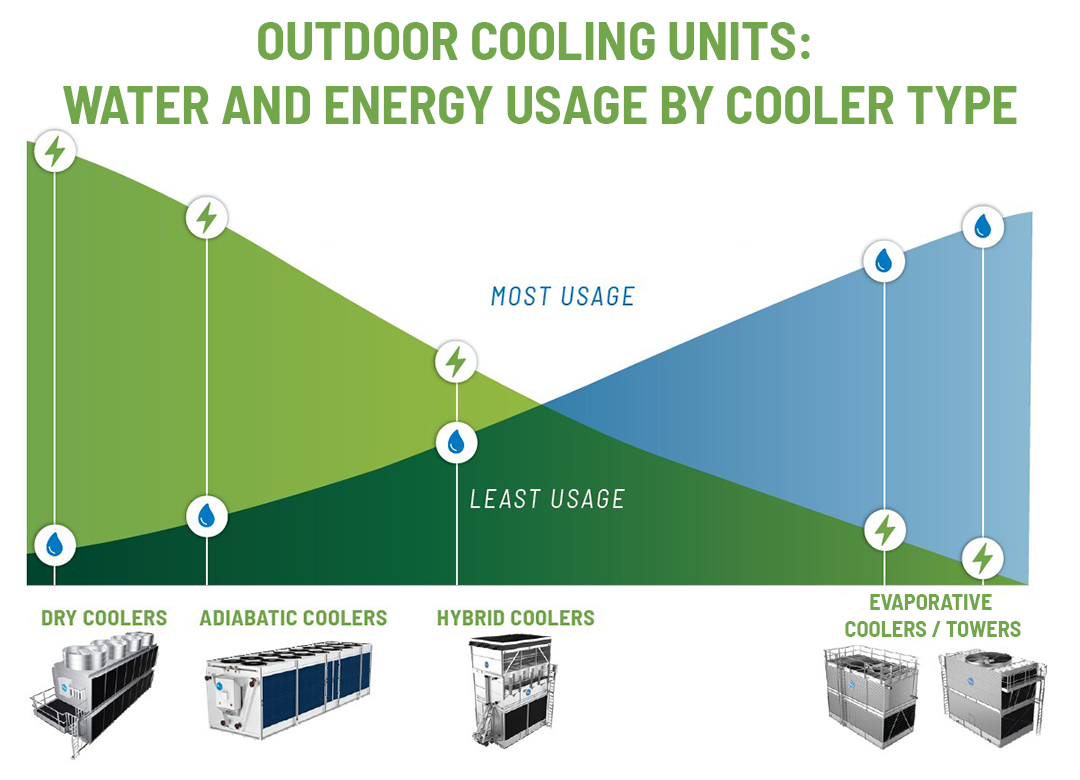
Cooling Tower Performance Metrics
Key performance indicators for external systems begin with heat rejection efficiency, typically measured by how closely the system can cool water to the ambient wet bulb temperature.
Approach temperature, defined as the difference between the leaving water temperature and the wet bulb temperature, is a critical metric.
A lower approach indicates more efficient cooling, but it often requires increased fan and pump energy.
Fan power consumption is another core metric. The integration of variable frequency drives (VFDs) helps minimize energy use during partial load conditions.
Seasonal variations also impact water usage and energy efficiency.
For example, in cooler climates or shoulder seasons, towers can operate in dry mode more frequently, reducing water consumption without compromising performance.
Evaporative Cooling Efficiency
Evaporative cooling systems are recognized for harnessing the thermodynamic advantage of latent heat transfer, making them highly energy-efficient even under high thermal loads. Efficiency is influenced by wet bulb effectiveness and how closely the cooled water temperature approaches the wet bulb limit.
However, this effectiveness comes with water usage trade-offs.
Optimizing water usage involves implementing smart control systems that monitor humidity and temperature in real time to modulate water flow and fan speed.
Some product offerings including hybrid and adiabatic options can switch between wet and dry operation modes, reducing water use during favorable ambient conditions. Maintenance practices also significantly affect evaporative performance over time.
Scaling, biological fouling, or fill media degradation can erode thermal performance and increase energy consumption.
Traditional Strategies That Shaped Modern Cooling Efficiency
- Manual Setpoints & Timers: Early systems relied on static control strategies, which led to overcooling or excess fan usage.
- Mechanical Drives: Belt and gear-driven fans were standard, increasing maintenance and reducing efficiency. Direct-drive fans with permanent magnet motors or EC fans are also gaining traction due to their efficiency and reliability.
- Single-Mode Cooling: Most systems ran exclusively in evaporative mode, using water continuously regardless of ambient conditions.
- Scheduled Maintenance Intervals: Maintenance was performed on a calendar basis, not based on real-time performance indicators.
- Minimal Automation: Operators relied heavily on manual oversight, which left room for human error and inconsistent performance.
Today’s advanced external cooling systems, including those from BAC, have moved far beyond these limitations by incorporating real-time monitoring, variable-speed operation, hybrid modes, and predictive maintenance capabilities.
Cooling Revolution for Inside Data Centers: Immersion Technologies
As data centers become more compute dense and energy intensive, which in turn generates more heat, traditional air cooling methods such as CRAH are struggling to keep up.
Immersion cooling has emerged as a powerful alternative, particularly for high-performance and AI workloads.
By submerging servers directly into thermally conductive dielectric fluids, this approach delivers highly efficient heat removal.
Immersion Cooling Fundamentals
In immersion systems, IT hardware is fully submerged in a non-conductive fluid that directly absorbs and removes heat. These dielectric fluids are designed for stability and effective thermal transfer.
Compared to air cooled server racks, immersion offers more efficient and uniform heat removal without the need for server fans or internal airflow management. There is also minimal maintenance, no dust to clog servers or filters to change out.
System designs replace standard racks with tanks or enclosures with pumps and heat exchangers.
Though infrastructure requirements differ, the result is compact, efficient cooling that reduces reliance on mechanical equipment.
Immersion Cooling Efficiency Metrics
Immersion cooling dramatically improves energy efficiency. Many deployments achieve Power Usage Effectiveness (PUE) <1.05 by eliminating traditional CRAC and CRAH units and reducing fan energy.
Lower noise levels and higher quality heat output also support heat recovery and broader facility optimization. Immersion cooling is near silent with no fans compared to traditional air cooled methods.
Because of its direct fluid contact with components, immersion supports higher power densities while maintaining stable temperatures, helping extend equipment lifespan and reduce risk of thermal throttling.
Integrating Immersion with Facility Scale Cooling
While immersion cooling provides exceptional efficiency, it needs to be integrated into a larger cooling system strategy. These systems, like their air cooled counterparts, still require external heat rejection to transfer absorbed heat away from the facility. Immersion cooling can also potentially eliminate the need for chillers or refrigerants. In most applications, immersion cooling works alongside outdoor cooling infrastructure such as open loop evaporative cooling towers, fluid coolers, hybrid systems, adiabatic coolers, or dry coolers depending on site design and climate considerations.
The real value lies in this integration. By offloading the most thermally intense workloads like AI training or high performance computing into immersion systems, facilities can reduce the burden on traditional room level cooling. This allows operators to allocate airflow resources more strategically, optimize fan speeds, and reduce energy use across both internal and external systems.
Combining immersion cooling with outside heat rejection, such as BAC’s COBALT™ immersion cooling system, offers a highly efficient way to manage localized heat while the facility wide systems handle broader heat rejection. This approach, of a comprehensive design for heat rejection for both inside and outside the data center, enables a more flexible, scalable, and efficient thermal architecture tailored to the evolving demands of modern compute environments.

Evaluating Internal Cooling Approaches: Immersion vs. Other In-Rack Technologies
As data centers evolve to support AI, machine learning, and high-density computing, internal cooling strategies are under increased scrutiny. Rather than replacing external cooling systems like cooling towers, internal systems, including immersion cooling, work in integration with them to manage rising thermal loads.
The true comparison lies among cooling technologies for inside the data center. Immersion cooling competes with direct-to-chip cold plate systems, rear door heat exchangers (RDHx), and traditional air-cooled server racks supported by CRAH units.
Each solution presents distinct tradeoffs based on density, efficiency, water usage, and scalability. Selecting the right mix requires understanding how they align with facility goals and workloads. Click here to learn more about these alternatives.
Cooling Performance in High Density Environments
While CRAH-based systems are familiar and widely used, their performance declines at elevated densities, often requiring containment, fan upgrades, or supplemental cooling.
Direct to chip and RDHx systems improve thermal handling but can be limited by integration complexity or maintenance demands.
Immersion cooling, by contrast, submerges hardware in dielectric fluid, eliminating hotspots and enabling consistent thermal performance even up to 150 kilowatts per immersion cooling tank. This makes it well-suited for AI clusters and high-performance computing environments.
System Efficiency and Lifecycle Costs
Traditional in-rack air systems rely heavily on fans and airflow management, which drives up energy consumption as density increases.
Liquid-cooled alternatives, especially immersion, can dramatically reduce internal fan use and improve Power Usage Effectiveness PUE, often reaching values <1.05 in optimized deployments.
While immersion systems may involve higher initial costs for specialized tanks and fluid management, they often yield lifecycle advantages through reduced mechanical complexity, improved thermal stability, and longer equipment lifespan.
Operational Flexibility and Redundancy
External heat rejection solutions such as cooling towers offer modular scaling and are compatible with N+1 redundancy configurations, allowing maintenance on individual cells without compromising uptime.
Their separation from the IT environment adds a buffer layer of resilience.
While immersion eliminates many single points of failure (like air movers), tank-level redundancy must be considered during system design.
Sustainability and ESG Impact
Cooling towers have improved in efficiency with the use of variable-speed drives and innovative controls, but they still rely on water-intensive evaporative cooling.
Their carbon and water footprints can become limiting factors in jurisdictions with strict sustainability mandates.
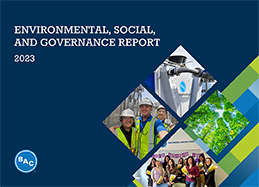
Immersion systems significantly reduce water usage and fan-related emissions while also supporting heat recovery applications.
Their closed-loop operation aligns with ESG objectives focused on carbon reduction, water conservation, and sound abatement.
Deploying immersion systems alongside energy-efficient outdoor rejection units enables data centers to meet stringent environmental targets and reporting obligations.
For more information on BAC and sustainability including our own ESG report, click here.
BAC's Integrated Approach: Optimizing Total Facility Efficiency
BAC delivers a comprehensive cooling strategy for data centers by combining the strengths of both external and internal cooling technologies.
Rather than positioning air-based and liquid-based solutions as competing alternatives, BAC designs systems where outdoor heat rejection solutions and immersion cooling work together to maximize uptime, efficiency, and sustainability.
Dynamic Thermal Load Coordination
BAC’s integrated cooling ecosystem enables data centers to manage varying workloads and climate conditions with greater flexibility.
By pairing advanced outdoor heat rejection solutions – including evaporative cooling towers, dry coolers, adiabatic or hybrid products – with internal immersion cooling systems, operators can intelligently allocate thermal load between outdoor and indoor assets.
During cooler months or periods of standard compute load, external cooling towers may handle most of the burden.
When demand surges or server density increases, BAC’s patented immersion cooling tank with Cortex™ technology delivers targeted, high-efficiency performance enabling PUE <1.05.
This dynamic coordination supports lower energy usage, stronger resilience, and reduced water dependency across the facility.
System Optimization Benefits
An integrated approach improves facility-wide PUE by ensuring each cooling component operates within its optimal range.
Flexibility in a range or outdoor heat rejection solutions with immersion cooling will enable data centers to align with evolving water regulations, manage operating costs, and reduce environmental impact.
As infrastructure demands grow, this harmonized cooling model of the Cobalt immersion cooling system provides both the scalability and adaptability needed for future technologies, compliance requirements, and carbon reduction goals, without requiring disruptive overhauls.
BAC supports this holistic strategy with a robust suite of solutions:
- Heat Rejection for Outside the Data Center: engineered for thermal efficiency, reliability, and different options available to reduce energy usage and/or water usage
- Immersion Cooling Tank Powered by Cortex™ Technology: designed to deliver dependable performance, efficient operation, and future-ready scalability and enables PUE <1.05
- Comprehensive System Design Support: to assist in the design and of complex cooling infrastructures
Implementation Considerations and Best Practices
Metric Monitoring and Reporting
To ensure sustained cooling performance, data centers must implement real-time monitoring tools that track key metrics like PUE, TUE, WUE, and component-level energy usage.
These systems provide transparency and accountability, enabling operators to benchmark performance against industry standards and regulatory expectations.
By using these insights, facilities can adopt a continuous improvement approach, fine-tuning cooling operations as workloads evolve.
Additionally, robust data collection supports compliance with environmental reporting requirements and corporate sustainability goals.
Design and Planning Recommendations
Every data center is unique. BAC recommends starting with a facility-wide assessment to identify cooling inefficiencies and uncover optimization opportunities.
Technology selection should be tailored to the site’s operational goals, climate conditions, and compute density.
In existing facilities, a phased implementation approach allows integration with minimal disruption, enabling operators to upgrade systems while maintaining uptime.
Planning for future expansion is also key. Cooling strategies should support scalability, ensuring the infrastructure can accommodate tomorrow’s demands without redesign or risk.
Future Outlook
As data centers become more energy- and water-conscious, optimizing cooling through precise efficiency metrics is no longer optional, it’s essential.
The future lies in technologies that work together, providing adaptable, measurable, and sustainable performance.
BAC stands at the forefront of this evolution, delivering both traditional and innovative cooling solutions designed for real-world challenges.
For data center teams seeking to assess and improve their cooling infrastructure, BAC’s experts are ready to help.
